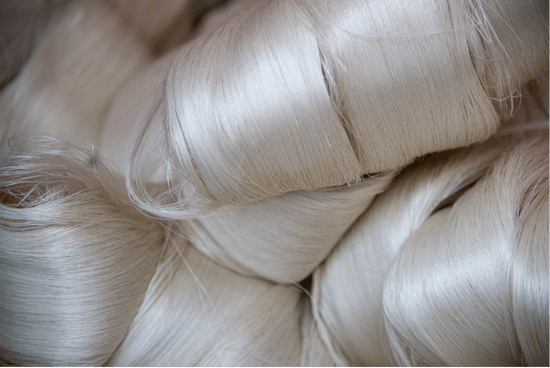
Properties and Overview of PAN (Polyacrylonitrile)
Overview:
 PAN (Polyacrylonitrile) is a versatile synthetic polymer widely recognized for its strength, chemical resistance, and thermal stability. As a key precursor in carbon fiber production, PAN is crucial in industries requiring lightweight and high-performance materials. Beyond its use in carbon fiber production, PAN is valued for its adaptability in creating textiles, films, and various industrial applications.
PAN (Polyacrylonitrile) is a versatile synthetic polymer widely recognized for its strength, chemical resistance, and thermal stability. As a key precursor in carbon fiber production, PAN is crucial in industries requiring lightweight and high-performance materials. Beyond its use in carbon fiber production, PAN is valued for its adaptability in creating textiles, films, and various industrial applications.
Production:
The production of PAN involves the polymerization of acrylonitrile monomers, often with comonomers like methyl acrylate or itaconic acid, to improve processing and final material properties. This polymerization is typically carried out using suspension or solution techniques, resulting in a material that can be spun into fibers or molded into desired forms. In the case of carbon fiber production, PAN fibers undergo stabilization and carbonization processes, where they are heated under controlled conditions to remove non-carbon elements and create a strong, high-performance material.
Applications:
PAN has many applications due to its excellent mechanical and chemical properties. Its primary use is as a precursor for carbon fiber, extensively employed in aerospace, automotive, and sporting goods industries for lightweight and strong components. PAN-based fibers are also used to produce textiles, including clothing, carpets, and upholstery, due to their durability and resistance to shrinking and wrinkling. In filtration systems, PAN is used to create membranes resistant to chemicals and high temperatures, making them ideal for water and air purification. Additionally, PAN is applicable to producing industrial ropes, safety nets, and reinforcing materials for concrete, owing to its strength and resistance to environmental degradation.
Summary:
Polyacrylonitrile is a critical material in modern engineering and industrial applications, offering a unique combination of strength, durability, and chemical resistance. Its role as the primary precursor for carbon fiber underscores its importance in high-performance and lightweight solutions. As technology advances and the demand for sustainable and efficient materials grows, PAN remains a cornerstone polymer in developing innovative products across multiple industries.
See a comprehensive list of electrical, mechanical, physical and thermal properties for PAN (Polyacrylonitrile) below:
Electrical Properties of PAN (Polyacrylonitrile)
Unfamiliar with a property? Click it's description to be given a full definition in the GLOSSARY
See properties and overview for
ALLOYS and CHEMICAL ELEMENTS
popular in engineering
Require different units not displayed?
CONVERT VARIOUS UNITS HERE
Mechanical Properties of PAN (Polyacrylonitrile)
Unfamiliar with a property? Click it's description to be given a full definition in the GLOSSARY
See properties and overview for
ALLOYS and CHEMICAL ELEMENTS
popular in engineering
Require different units not displayed?
CONVERT VARIOUS UNITS HERE
Physical Properties of PAN (Polyacrylonitrile)
Unfamiliar with a property? Click it's description to be given a full definition in the GLOSSARY
See properties and overview for
ALLOYS and CHEMICAL ELEMENTS
popular in engineering
Require different units not displayed?
CONVERT VARIOUS UNITS HERE
Thermal Properties of PAN (Polyacrylonitrile)
| Thermal Property (Units) | Value |
|---|---|
| PAN (Polyacrylonitrile) Coefficient of Thermal Expansion (µm/m·K) | ~40 to 80 |
| PAN (Polyacrylonitrile) Emissivity Coefficient | 0.85 to 0.9 |
| PAN (Polyacrylonitrile) Specific Heat Capacity (J/kg·K) | 1500 |
| PAN (Polyacrylonitrile) Thermal Conductivity (W/m.K) | 0.2 |
| PAN (Polyacrylonitrile) Thermal Conductivity (BTU/h·ft·°F) | 0.12 |
Unfamiliar with a property? Click it's description to be given a full definition in the GLOSSARY
See properties and overview for
ALLOYS and CHEMICAL ELEMENTS
popular in engineering
Require different units not displayed?
CONVERT VARIOUS UNITS HERE
 ADDED TO MY FAVORITES!
ADDED TO MY FAVORITES! REMOVED FROM MY FAVORITES!
REMOVED FROM MY FAVORITES!